“I wanted to record people’s lives because I valued them. I wanted them to be remembered. If you take a photograph of someone they are immortalised, they’re there forever. For me that was important, that you’re acknowledging people’s lives, and also contextualising people’s lives.”
– Chris Killip
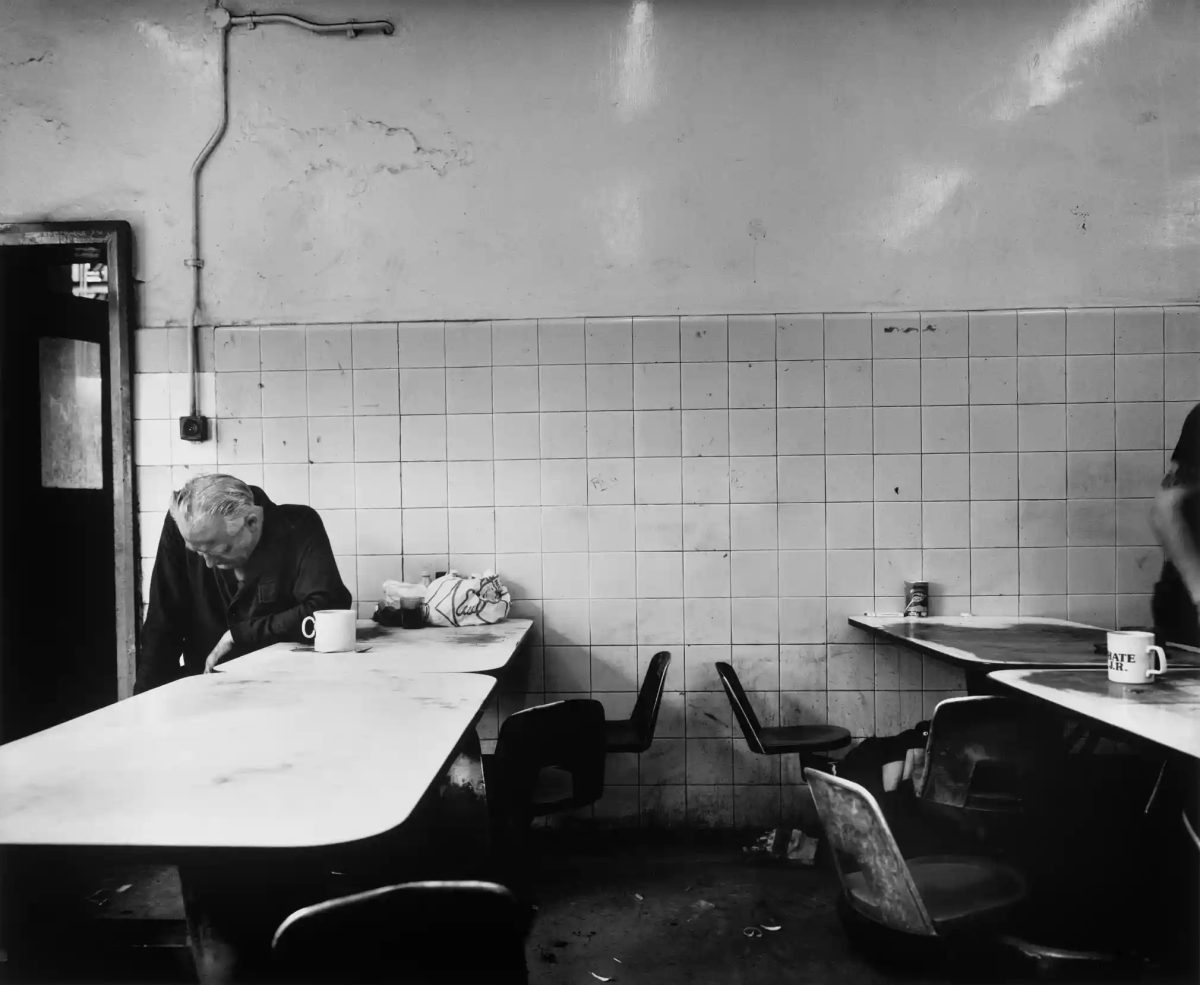
There’s a photograph (above) of a furnace worker among Chris Killip and Graham Smith’s pictures of England’s north-east from 1975-87, mostly taken around Skinningrove, Tyneside, Middlesbrough and Co Durham. The man is in the mess room for No 4 and No 5 furnaces at Clay Lane Ironworks on the bank of the River Tees, Middlesbrough, in 1983.
A plain mug sits on a plain table before him. One another table a mug declares a hated for JR Ewing, the baddest man on TV’s Dallas. Texas oil and northern steel. He looks down. He looks spent. Says Smith: “British Steel Corporation were inviting workmen to sell their jobs. The furnace keeper, 62 years old and suffering, applied for redundancy, but was knocked back. His experience on an ageing furnace was valued more than his wellbeing.” The picture is called ‘Thirty-Eight Bastard Years on the Furnace Front’.

Cookie in the snow, Lynemouth, Northumberland, 1984
The two photographers have knows each other since the summer of 1975 when they met at Amber, a film and photography collective in Newcastle upon Tyne. This exhibition brings together their pictures from a time when when heavy industry was being shut down and working-class life broken.
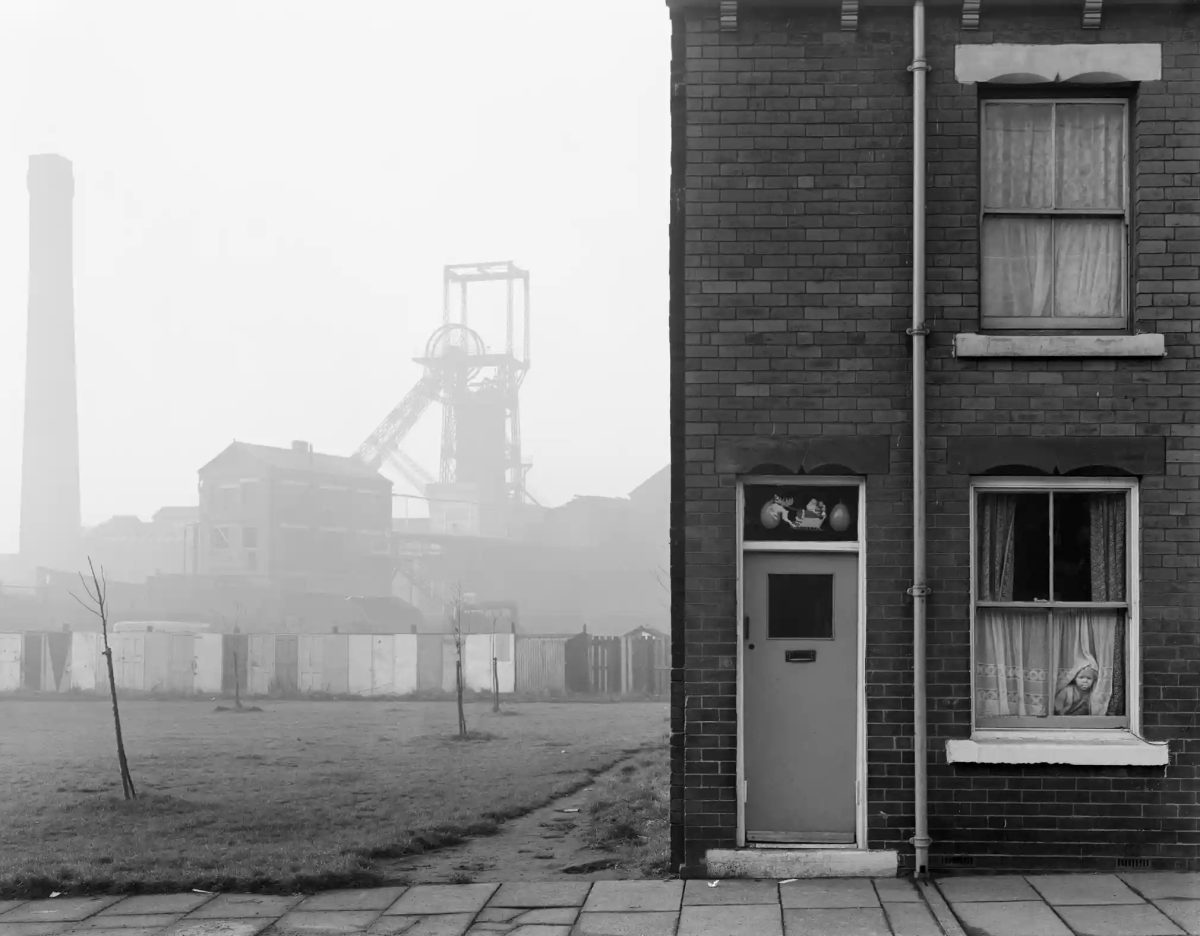
Terraced house and coal mine, Castleford, Yorkshire, 1976
“Late in life, Chris stated that during his years in Newcastle, he unknowingly recorded the de-industrialisation of north-east England. We both witnessed a rapid change to the industrial landscape and, in our own ways, recorded the transformation and aftermath”
– Graham Smith

Bever taking in the early morning sun, Skinningrove, North Yorkshire, 1982
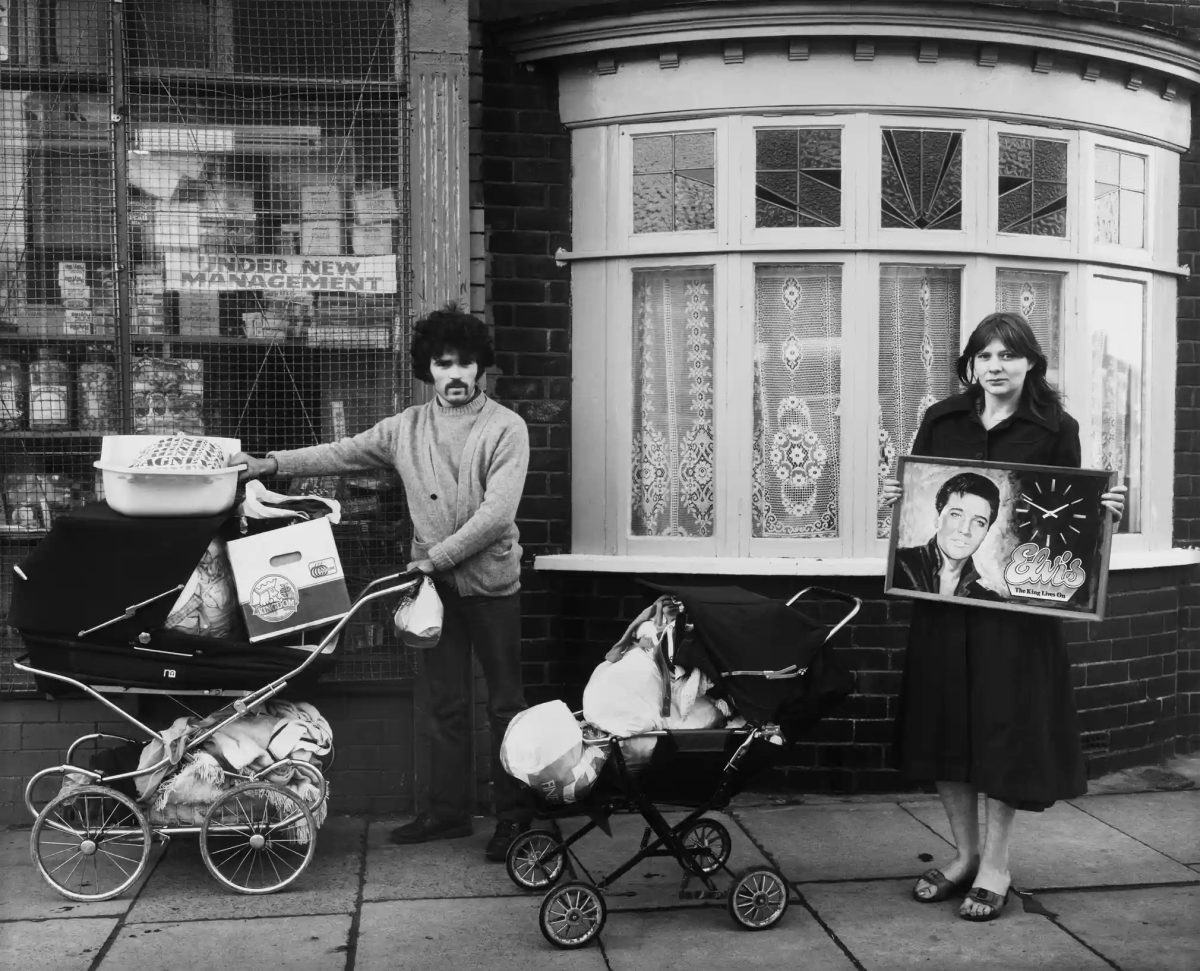
‘Who She Wanted and What She Got’ (kids at the in-laws, Boxing Day, South Bank, Middlesbrough, 1982)
‘Time was on my mind when I rushed past a young couple walking home with Christmas paraphernalia stuffed into their prams. Their five kids were left at the in-laws to be collected later. In one of the prams was an Elvis clock – a Christmas present for a mother and wife. It was a Sunday and I had 10 minutes to get to the Princess Alice pub before the bar closed. At first, I just wanted to ask them where they bought the clock from, but couldn’t resist taking a hurried photograph with my 5×4 hand-held plate camera. My wife, Joyce, didn’t like her Elvis clock. Some years later we gave it to Martin Parr”
– Graham Smith
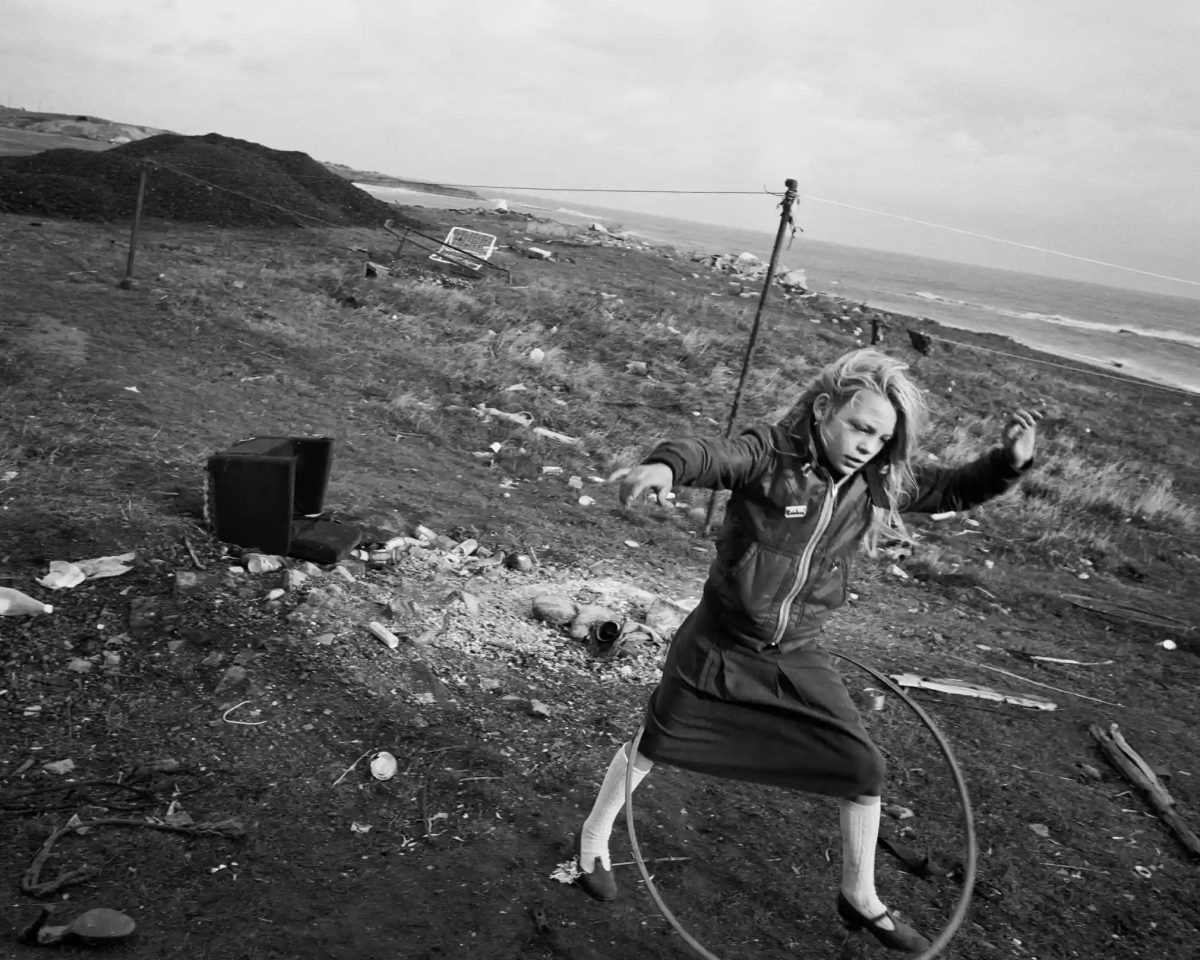
Helen and her hula-hoop, Lynemouth, Northumberland, 1984
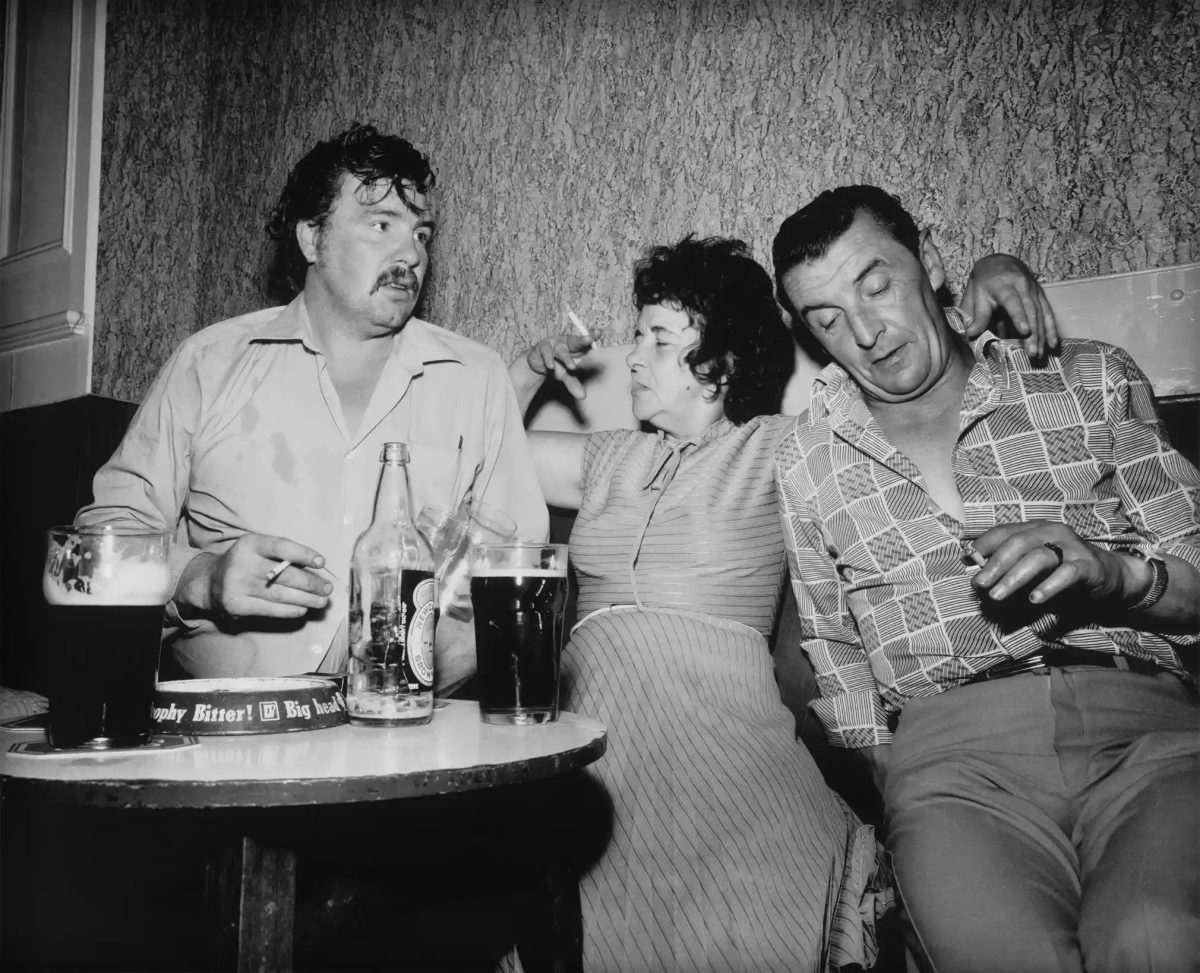
‘I Thought I Saw Liz Taylor and Bob Mitchum in the Back Room of the Commercial’ (South Bank, Middlesbrough, 1984)
“During the mid-80s, when Ted Cocker was boss of the Commercial pub, word reached far beyond South Bank and among many good drinkers that the back room of his pub was the place to be on a Friday night. Towards the end of a long day in the Commercial with my camera, there was a moment when I thought, “Is that Liz Taylor and Robert Mitchum in the back room?” Better to know when enough is enough, but I stayed for one more last pint’
– Graham Smith

Clay Lane Furnaces, South Bank, Middlesbrough, 1981
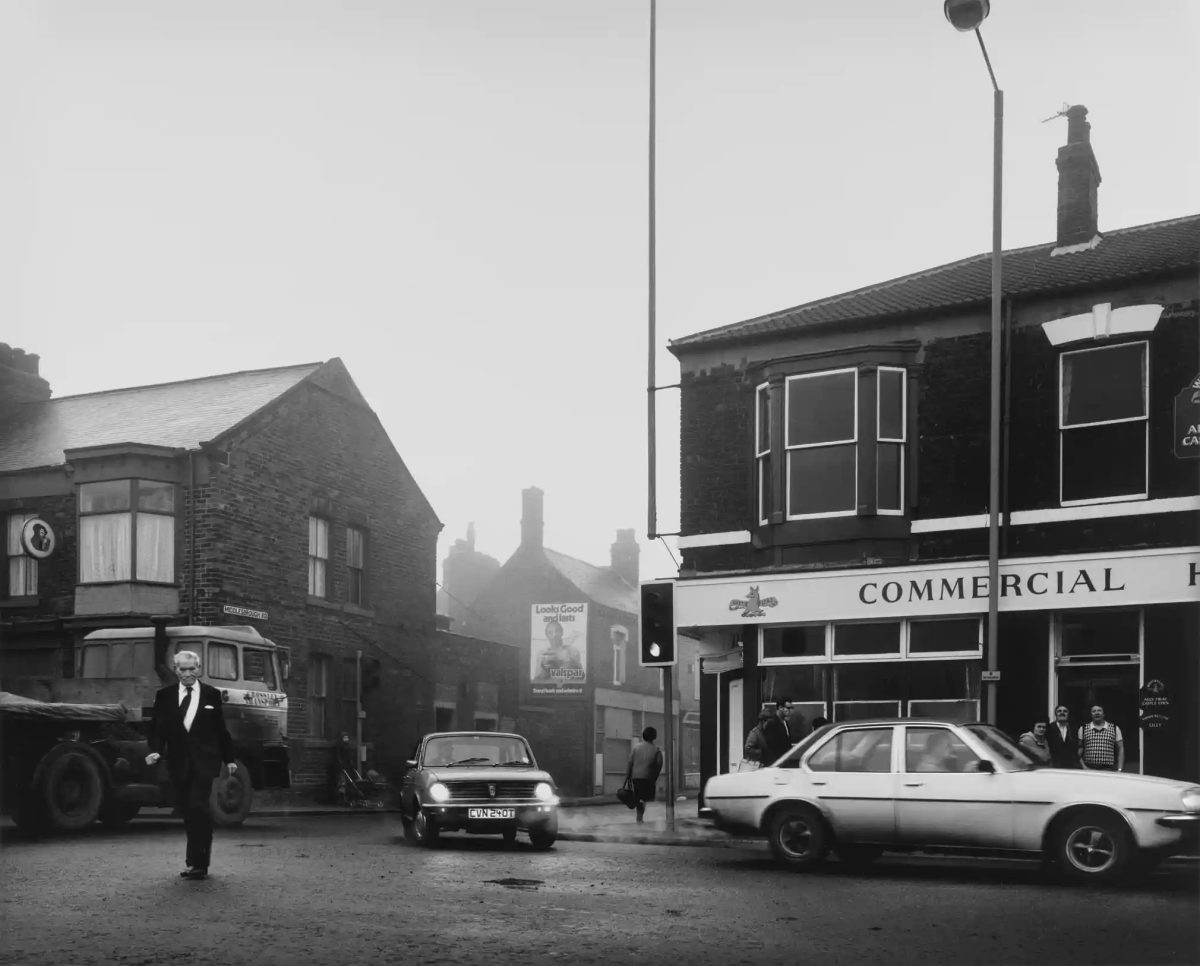
Bennetts Corner (Giro Corner), South Bank, Middlesbrough, 1982
“Bennetts Corner was once the central crossroads in South Bank. During the Thatcher years, unemployment benefit was paid by way of a Giro cheque sent in the post. The town’s main post office, which was also the Girobank, stood opposite the Commercial pub and, with satirical humour, the crossroads became known locally as Giro Corner. Ironically, the Girobank was in a building that was once a workman’s institute, paid for by subscriptions taken from the wage packets of men who worked in the local iron industry”
– Graham Smith
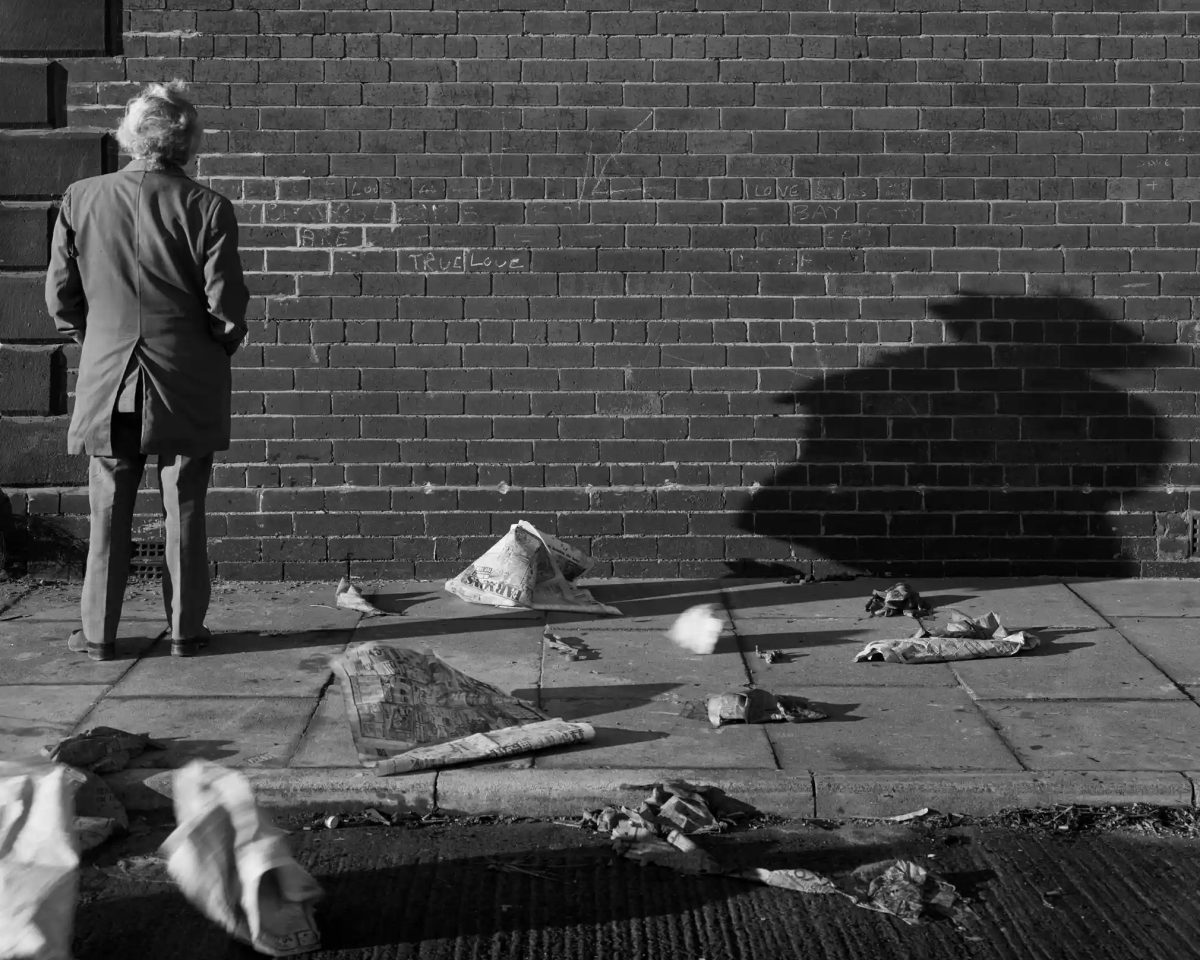
True love wall, Gateshead, Tyneside, 1975

Blackhill, Consett, County Durham, 1977

Clay Lane Furnaces, South Bank, Middlesbrough, 1981
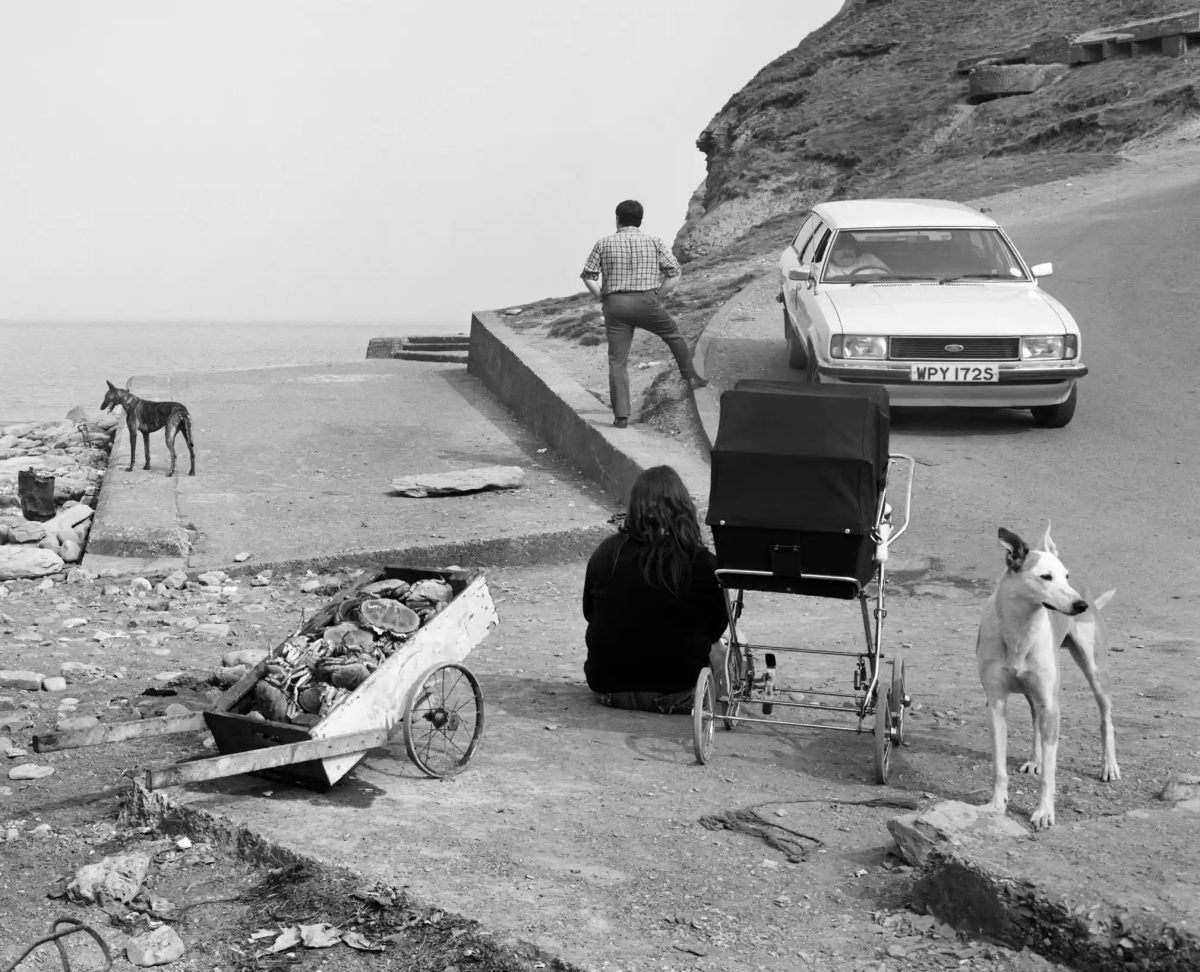
Crabs and people, Skinningrove, North Yorkshire, 1981
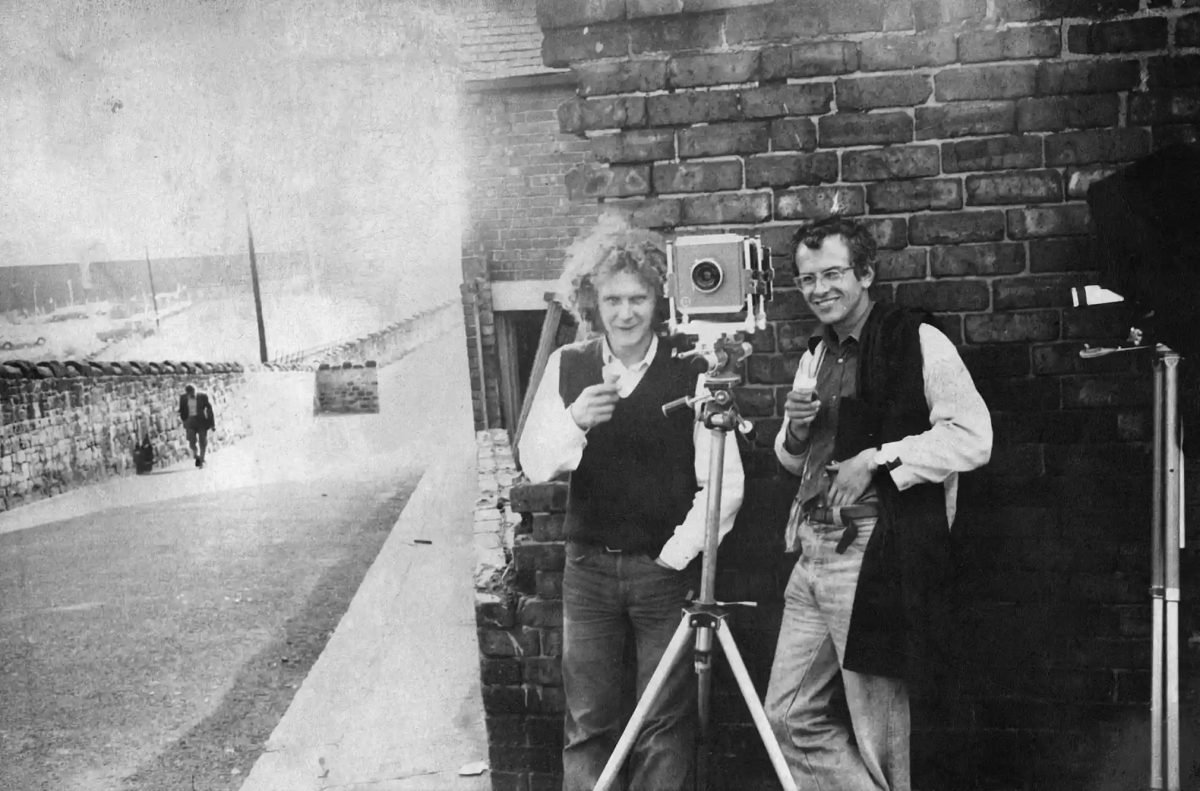
Smith (left) and Killip, Wallsend, North Tyneside, 1976
All photographs courtesy Augusta Edwards Fine Art
Would you like to support Flashbak?
Please consider making a donation to our site. We don't want to rely on ads to bring you the best of visual culture. You can also support us by signing up to our Mailing List. And you can also follow us on Facebook, Instagram and Twitter. For great art and culture delivered to your door, visit our shop.



